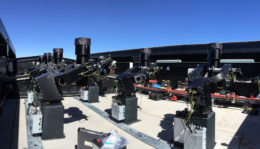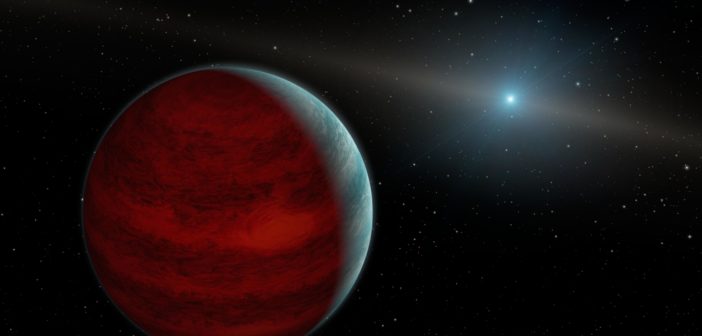Over the past 25 years, we’ve found thousands of worlds beyond our solar system. Nonetheless, some categories of exoplanets remain elusive — for instance, planets that orbit their hosts on long, slow paths. A new study shows how we might hunt these worlds down.
Observational Limits
Since the first exoplanet discovery a quarter century ago, we’ve found more than 4,000 confirmed planets orbiting other stars. A large number of these discoveries are planets that transit across the face of their host star — most identified by the Kepler Space Telescope or, more recently, by the Transiting Exoplanet Survey Satellite (TESS). These exoplanets are valuable targets because we can use the transits to measure properties like their radii, densities, bulk compositions, and even their atmospheres.Unfortunately, due to the nature of transit detections, our observations are inherently biased: it’s easier to detect and confirm short-period, large planets, which means we know a lot about hot Jupiters, but relatively little about wide-orbit, cooler planets.
Because the TESS spacecraft observes a typical region for less than a month, planets on wide orbits longer than 30 days will register — at most — a single transit in TESS data before the telescope moves on to the next section of sky. But can we somehow leverage these single transits to learn more about slow, wide-orbit planets?
Avoiding Overbooking
A planet candidate with only one transit detection could be confirmed with radial-velocity measurements of its host star. But high-precision radial-velocity instruments are in high demand! Without precise knowledge of a planet’s period, confirming that planet’s existence and measuring its properties would require a huge observational time investment from already overbooked radial-velocity instruments.
Fortunately, a team of scientists led by Samuel Gill (University of Warwick, UK) has now demonstrated a more efficient way of pinning down a planet after just one TESS transit.

Light curve showing the best fit to the transit photometry of NGTS-11 from TESS and NGTS. [Gill et al. 2020]
Two Transits, Fewer Options
Gill and collaborators followed up on a planet candidate that had registered a single TESS transit in September 2018. The team conducted an intense photometric monitoring campaign of the candidate’s host star using the economical telescopes of the Next-Generation Transit Survey (NGTS) facility in Chile — and with 79 nights of observations, they detected a second transit of the candidate 390 days after the initial TESS transit.
From the combined photometric observations, the authors were able to narrow down the possible periods for the planet to just 13 options. Using these constraints, they could then wrap up with brief and efficient radial-velocity measurements to identify the properties of the planet.
A Cool Discovery

The array of twelve 0.2-meter robotic telescopes of the NGTS facility in Chile. Only one of these economical telescopes was needed to identify a second transit of NGTS-11 b. [ESO/R. West]
Gill and collaborators’ identification of NGTS-11 b from just a single TESS transit shows the power of using ground-based photometry to pin down wide-orbit planets. This approach could help us to dramatically expand our understanding of the slower, long-period worlds beyond our solar system.
Citation
“NGTS-11 b (TOI-1847 b): A Transiting Warm Saturn Recovered from a TESS Single-transit Event,” Samuel Gill et al 2020 ApJL 898 L11. doi:10.3847/2041-8213/ab9eb9



4 Comments
Pingback: From AAS NOVA: “Identifying a Slow Planet from a Single TESS Transit” | sciencesprings
Pingback: Identyfikacja długookresowej planety na podstawie pojedynczego tranzytu TESS – PTMA Kraków
Pingback: Identyfikacja długookresowej planety na podstawie pojedynczego tranzytu TESS – Astronomia Śląska
Pingback: The Deepening Mystery of White Dwarf GD 394